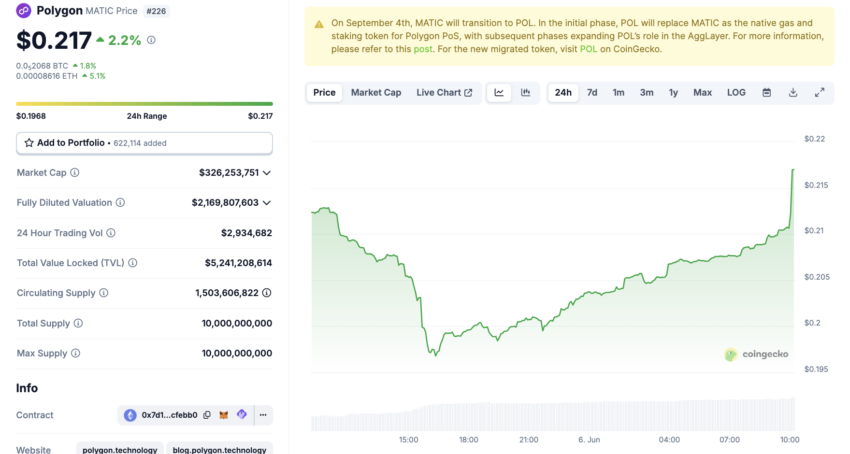 This morning, I came across some interesting news about Google’s updated site reputation abuse policies. Apparently, they’ve revised their main guidelines with some fresh updates.
This morning, I came across some interesting news about Google’s updated site reputation abuse policies. Apparently, they’ve revised their main guidelines with some fresh updates.
Related Posts

Hilbert Group And Xapo Bank To Launch $200 Million Bitcoin-Denominated Hedge Fund In September 2024 – A Game-Changer For Institutional Investors
In a bold move set to reshape the crypto investment landscape, quantitative investment firm Hilbert Group has announced a strategic…

Ethena Labs Leaves EU Market Over MiCA Compliance Issues
Ethena Labs is officially closing its German branch and EU operations after a previous MiCA application rejection. For the past month, the firm has been preparing to withdraw from this market.
Although the exit was anticipated, ENA reacted notably, with the altcoin falling over 7% after today’s announcement.
Ethena Labs Failed MiCA Effort
Ethena Labs has been facing continued regulatory difficulties in Europe. In late March, German authorities rejected Ethena’s application for MiCA compliance.
At the time, the firm suggested that this was a minor setback and that it would focus on other markets. Today, it announced that its German branch is winding down altogether.
“We have agreed with BaFin to wind down all activities of Ethena GmbH and will no longer be pursuing the MiCAR authorization in Germany. All whitelisted… users previously interacting with Ethena GmbH have at their request been onboarded with Ethena (BVI) Limited instead. As a result, Ethena GmbH no longer has any direct customers,” it claimed.
The statement further claimed that Ethena GmbH, the German branch, “has not conducted any mint or redeem activity” since the regulators’ MiCA ruling.
Specifically, regulators banned all sales of the USDe stablecoin, putting serious restrictions on the firm. In other words, this outcome is fairly expected. Ethena (BVI) Limited has taken over the German branch’s users.
The network’s governance token, ENA, has seen notable price swings around its MiCA efforts. In Early March, when Ethena Labs was reportedly on track to receive regulatory approval, ENA broke out of multi-month lows and nearly reached $2.5 billion in mark cap.
However, since the rejection, ENA saw continued bearish pressure, which was exacerbated by the macroeconomic conditions across the market. Today’s announcement drove further decline.

MiCA, the European Union’s new stablecoin regulations, have presented difficulties for several firms besides Ethena. For example, Tether’s stablecoins were delisted from EU exchanges when MiCA took effect, prompting serious changes to its business.
Several other issuers have been racing to fill the gap left by these firms by achieving compliance. Most recently, major centralized exchanges such as Crypto.com and OKX have achieved the license, further strengthening their grasp over the EU market.
The post Ethena Labs Leaves EU Market Over MiCA Compliance Issues appeared first on BeInCrypto.

Polymarket Announces Partnership with X
Polymarket is entering a partnership with X, Elon Musk’s social media platform. The partnership doesn’t have a lot of details yet, but it’s already caused a market impact.
Polygon’s price jumped significantly after this news.
Polymarket Partners with X
Polymarket, a major online prediction market, hasn’t had a lot of previous interactions with X. However, its landmark new alliance with Elon Musk’s X is a major market development. Promising to become the social network’s “official prediction market partner,” Polymarket teased at future gains.
“Combining Polymarket’s accurate, unbiased, and real-time prediction market probabilities with Grok’s analysis and 𝕏’s real time insights will enable us to provide contextualized, data-driven insights to millions of Polymarket users around the world instantaneously. We are proud to work with 𝕏 as the official prediction market partner and to continue our fruitful collaboration,” claimed Shayne Coplan, founder and CEO of Polymarket.
Details are still under wraps, but both firms said Polymarket odds and widgets will soon appear inside X posts and livestreams, letting users stake on everything from US elections to sports finals with a few taps. Polymarket was built on Polygon, an Ethereum-based L2 scaling solution, and its token spiked immediately after the announcement.

Whatever specific plans Polymarket and X have for their continued partnership, it has the potential to significantly change the crypto ecosystem.
The post Polymarket Announces Partnership with X appeared first on BeInCrypto.
